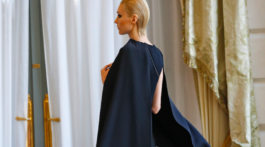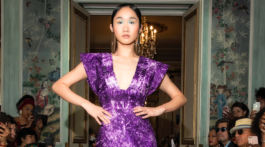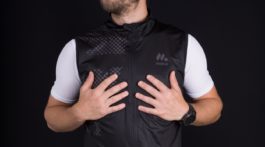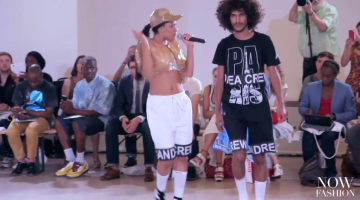The British supermodel Jean “The Shrimp” Shrimpton was born on November 7, 1942 in High Wycombe, Buckinghamshire of England. She became one of the most famous models of the 1960s when mod was the word!
“The Shrimp” as Jean Shrimpton became known, enrolled in Lucie Clayton’s famed school of modeling in 1960 at the age of 17. Upon graduating, she then signed with Lucie Clayton’s model management, which took her to the top of the modeling industry. Jean not only became one of the most famous British models of the 1960s, but also one of the greatest international supermodels of all time.
Jean became the first spokesperson for Yardley cosmetics. Her face appeared on all the top magazines on both sides of the Atlanta Ocean, including Harper’s Bazaar, Vogue and Vanity Fair. She also made the covers of Newsweek, Ladies Home Journal and Stern.
In 1965 Jean had become the world’s highest paid model. On October 30 of that year while attending the Victoria Derby in very conservative Melbourne, Australia, Jean Shrimpton caused an unintentional scandal. She arrived wearing a simple white mini dress. She wore none of the traditional garnishes with her dress such as gloves, a hat or stockings which were the custom accessories of the ladies attending the derby because she did not own any. This creation, which she had designed herself, was shocking as it rose several inches above her knees. This caused a stir so great that it reached international proportions and became known as the “Miniskirt Affair”.
The men whistled and the woman gave her cross looks, but she ignored it all. Lady Nathan, former mayor of Melbourne, accused Shrimpton of being “a child” and of having “bad manners”. Jean continued to ignore it all but later said, “I feel Melbourne isn’t ready for me yet. It seems years behind London.”
The whole “Miniskirt Affair” came about in a round about way and most amusing way. The fashion company, Orlon, had hired Shrimpton for a temporary role to come down to Australia for the sum of £2000 to promote its line of dresses made from synthetic fibers. That was an enormous amount of money at the time because it represented what the average Australian earned in a year. (To have an idea of The Shrimp’s fame at this time, one only need compare her fee to that of the world famous Beatles who had been paid £1,500 to tour Australia the year before). Instead of ready-to-wear clothes, the company sent insufficient amounts of fabrics to make the dresses that Jean had designed for the event. Because of this, Jean ordered her dressmaker, Colin Rolf, whom she had hired in Australia to make the dresses a little shorter thinking that no one would notice. Unfortunately for her, Orlon had not given her details on the Melbourne Cup. She had no idea that it was the best dressed event of the day in all of Australia. The whole of the Australian society circles were scandalized. They found Jean’s appearance shocking and disgraceful. But these were the sixties, and her presence there and appearance at the derby ignited a debate on the image of women in Australia. It also served to place a spotligh on certain elements in the country’s cultural gap. In 1986, Jean said “…it’s one of those things that followed me around for ages. I couldn’t believe the fuss they made.”
This event, which was born from innocent intentions, took on international proportions and made Shrimpton’s name a household word. The photographers had shot her from upward angles to make the dress appear even shorter than it was in reality. The photo made front page headlines around the world. Unwittingly, “The Shrimp” had ignited the flames of a cultural revolution in conservative Australia. Girls and young women took her lead. They began wearing and even cutting their dresses shorter to greet the new fashion trend.
On these events and the “invention” of the mini, Shrimpton once reminisced, “Mary Quant rode in on the back of it, immediately making shorter skirts. Many people gave her credit for the new craze, but the truth was that the mini took off because Orlon had been stingy with the fabric.”
Shrimpton was once engaged to the fashion photographer David Bailey. The two met on the filming of a corn flakes advertisement. In spite of his friends telling him that “The Shrimp” was to posh for him, Bailey pursued her. But at the time, she was still a young and naïve country girl. Bailey, however, was already married at the time.
Shrimpton and Bailey embarked on a relationship that lasted four years. The two moved into a simple basement where they set up house, which could have been improved with “basement refinishing services“. They both loved animals, which explained the fact that they had 24 finches and lovebirds, in addition to two dogs (Monie and Bertie). The hip and swinging duo traveled all over Europe and the United States working as a team on top fashion assignments. By the time Bailey and his wife Rosemary divorced in December 1963, Jean’s career had consolidated and she was no longer interested in marrying Bailey. Then in January 1964, she started her three-year affair with the movie star, Terence Stamp. Later, she got involved with the photographer Jordan Kalfus during a 1967 trip to New York. She dumped him in 1969 and return to London at the age of 26.
Heathcote Williams, an anarchic and penniless writer for the Transatlantic Revue, was next on Shrimpton’s voyage to marital bliss. Their relationship was volatile and they ended it. Jean then started a seven year relationship with Williams’ friend Malcolm. During this time, Jean financed Malcolm, his wife, his other ex-girlfriend and his two kids.
With all the bills coming in and her money seemingly heading into a bottomless whole in the ground, Shrimpton went back to work and picked up a modeling job for Algarve. That job did not go as well as Jean would have liked. She worked with a younger model. The younger model not only got more shots than Jean, but she got better clothes as well. That event was the writing on the wall as far as Jean’s modeling career was concerned. After that, she tried her hand in the antique business. That proved to be the step that she needed on her road to love. One of her customers was a tall, very handsome man with blond hair. His name was Michael Cox. Jean began an affair with him. When he and his wife, Caroline, finally divorced, he and Jean married on January 12, 1979 at the register office in Penzance. Jean was three months pregnant at the time with their son Thaddeus. Their marriage reception was held at the Abbey Hotel, which was an old Gothic house overlooking a harbor. After Thadeus’ birth, the Cox’s purchased the hotel upon learning that it was for sale. The three live in it still today. Jean, who had never been comfortable with her fame, never allowed any images of her as “The Shrimp” to be placed in the hotel. She runs it (Abbey Hotel BB in Cornwall) now and is said to be happier than she had ever been in her life.
During her career as a model, Jean Shrimpton was a member of a trio of models to take the world by storm. She, along with Twiggy, Veruschka and Peggy Moffit, defined the look of British beauty and mod around the world. Shrimpton, the first of them all to become famous around the world, was voted Model of the Year by Glamour. In 1965, she became the world’s highest paid models and set off a cultural revolution in Australia. Elle named her “The Most Beautiful Girl in the World”. Chanel 5’s placed her 18th on its list of World’s Greatest Supermodels. She was “The Shrimp” and her place in the annals of fashion is secured. In 1990, she published her autobiography titled, Jean Shrimpton: An Autobiography.
Actress – filmography
Privilege (1967); “What’s My Line?” (1967) (TV)
Height : 5′ 9″; Measurements: 33-22-34 (as novice model), 34B-23-35 (during prime of her career in 1960s), (Source: Celebrity Sleuth magazine)









